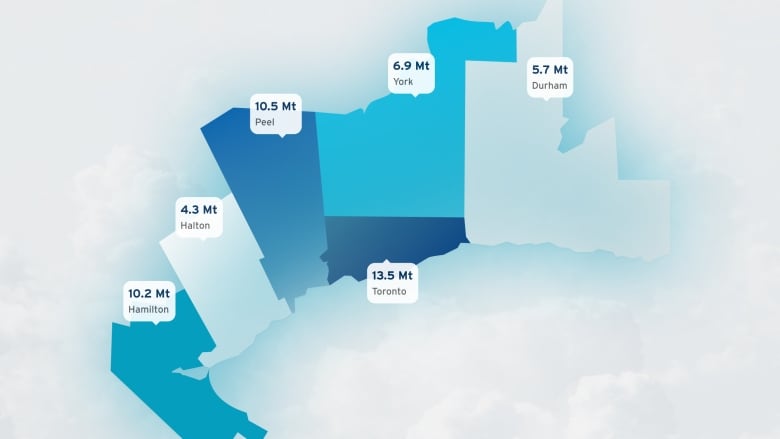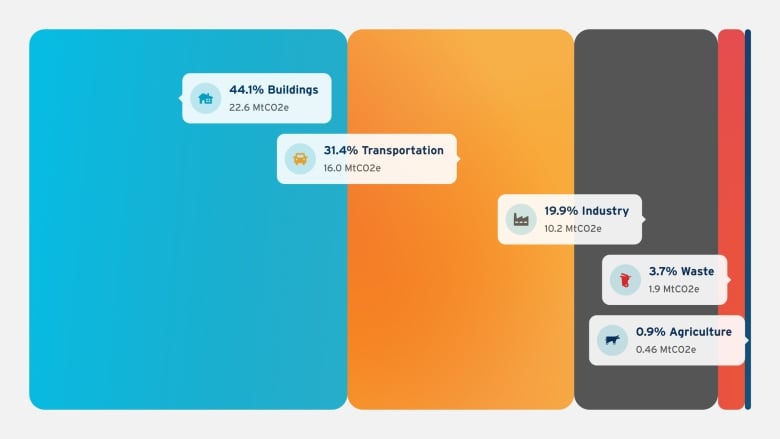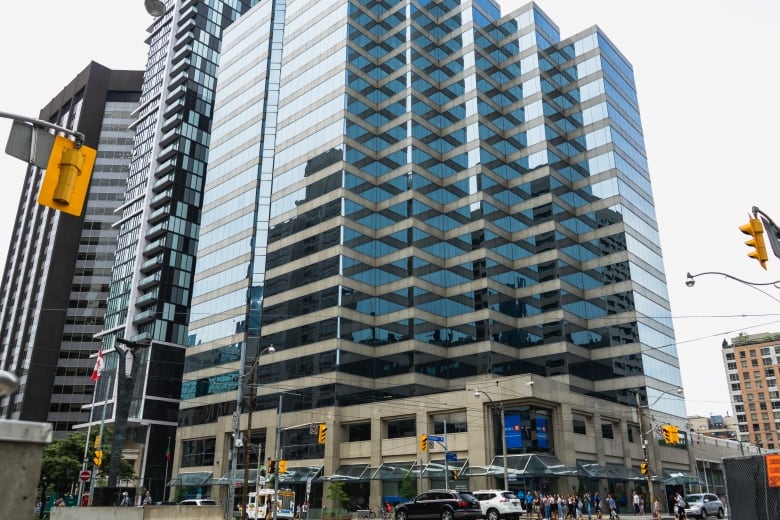
The Greater Toronto and Hamilton Area is on track to reach pre-pandemic levels of carbon emissions, according to a new report released on Tuesday.
The report from The Atmospheric Fund (TAF), which describes itself on its website as a “regional climate agency that invests in low-carbon solutions,” says the drop in emissions at the height of pandemic lockdowns is now being reversed.
Julia Langer, TAF’s CEO, told CBC Toronto the increase is a disappointing trend.
“The dramatic emission reduction that we saw due to working from home and the cars off the road is starting to come back,” she said.
“We’re going in the wrong direction.”
According to the report, GTHA carbon emissions decreased by 13.4 per cent in 2020. The researchers looked at data from Toronto, Hamilton, Halton, Peel, York, and Durham and found emissions increased in the region by 4.5 per cent (2.2 million tonnes) in 2021.
‘The tools are there’
When compared with data from previous years, the report found there has been little progress made in the GTHA since 2015. TAF said a six per cent year-over-year decrease is necessary to hit most cities’ 2030 emission targets.
The report also provides a roadmap to address the emissions issue, Langer said.
“It is challenging, but it is possible,” she said. “The tools are there.”
According to the report, buildings (44 per cent), transportation (31 per cent), and industry (20 per cent) are responsible for the majority of emissions in 2021. Waste and agriculture are responsible for the remaining four per cent.

The research also found that emissions from electricity rose by 28 per cent, attributed to the increasing use of natural gas-powered generating plants.
Sarah Buchanan, with the Toronto Environmental Alliance, told CBC Toronto that much of that natural gas use in Toronto comes from buildings.
Building new green buildings and retrofitting existing buildings is a huge growth opportunity for the city, she said.
“It’s going to take a lot of work to retrofit every building in Toronto and to make sure new buildings are built to much higher standards, Buchanan said.
“But that work creates huge, huge amounts of job opportunities.”

Future Majority, a non-profit working to address climate change and other issues that impact young people, also wants to see more emphasis on green building developments.
“What essentially green development standards do is present a clear and effective way for us to significantly reduce greenhouse emissions in our communities,” Meshali Awan, Future Majority spokesperson, told CBC Toronto.
Many cities within the GTHA have developed some version of a green development standard.
But the province’s newly introduced housing legislation, Bill 23, threatens the progress made in developing these standards, Awan said.
“What young people are really advocating for is an amendment to the bill so that we can get back on track to meeting our climate targets in coming years,” she said.
As newly-elected municipal councils begin new terms Tuesday, Awan wants to encourage citizens to express concerns about rising emissions, Bill 23, and the climate crisis in general.
Higher emissions a health concern
In response to the report, environmental experts also noted that high carbon emissions can be detrimental to people’s health.
“We’re already feeling the negative impact of carbon emissions in Toronto,” Buchanan said. “Many folks have noticed that heat waves are getting more intense in Toronto and flooding is getting more intense as well.”

These conditions, heat waves especially, can have devastating impacts on the health of residents, she said.
Dr. Samantha Green, a family physician and board member with the Canadian Association of Physicians for the Environment, agreed.
“Carbon emissions are also proxy for air pollution,” she told CBC Toronto.
“We often think of asthma and respiratory conditions, but air pollution also triggers heart attacks, strokes and other vascular problems, worsens diabetes, can have adverse impacts on pregnancy, has been linked with the development of Alzheimer’s dementia, and is also linked with various forms of cancer.”
Langer noted the report also includes some of the more effective policies and programs that are helping reduce emissions.
Overall, she said, the report should act as a briefing note to local governments and industry decision-makers, telling them how to act and how quickly they need to do so.
“The longer we wait, the harder it gets and the more expensive it gets.”